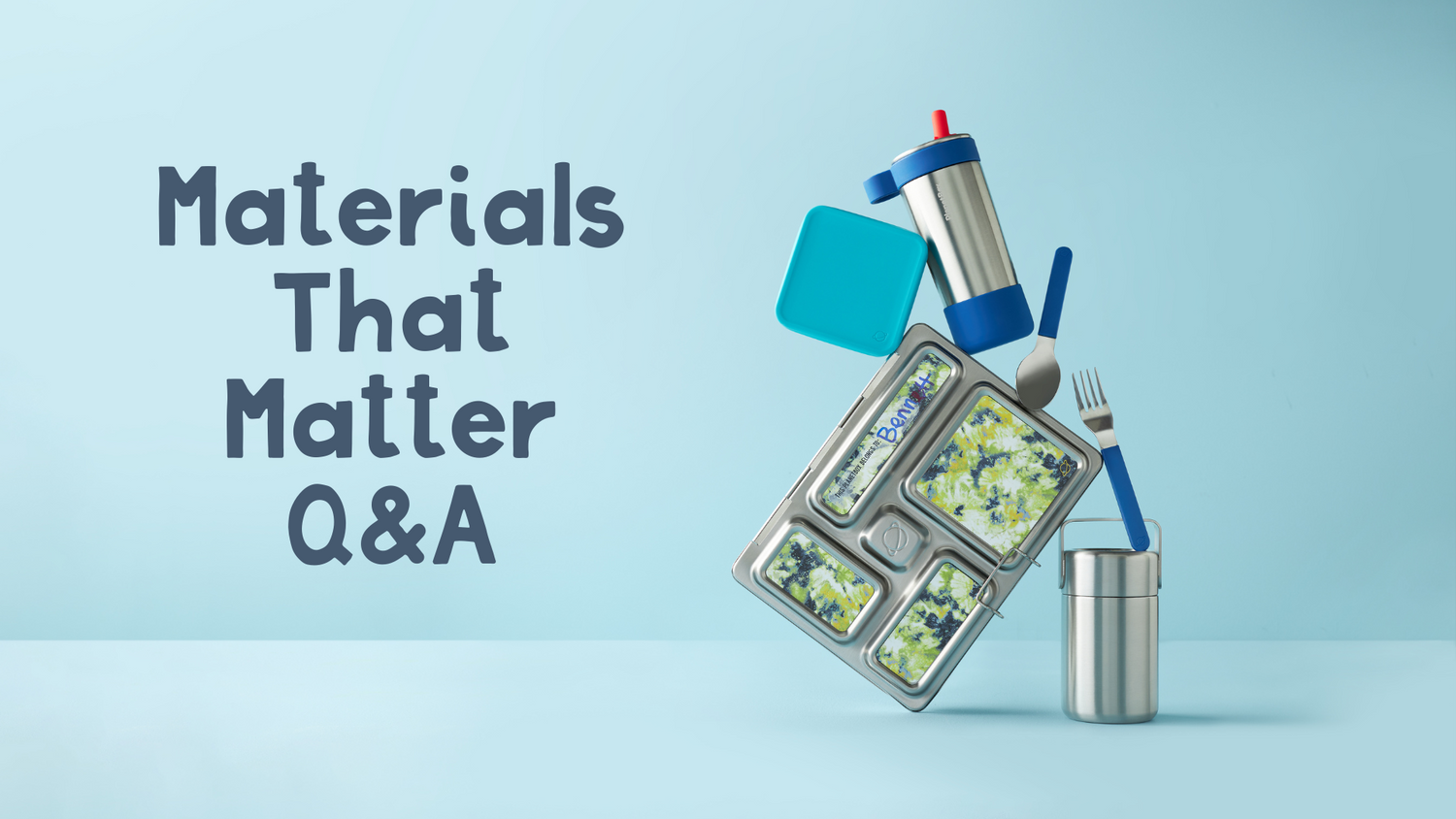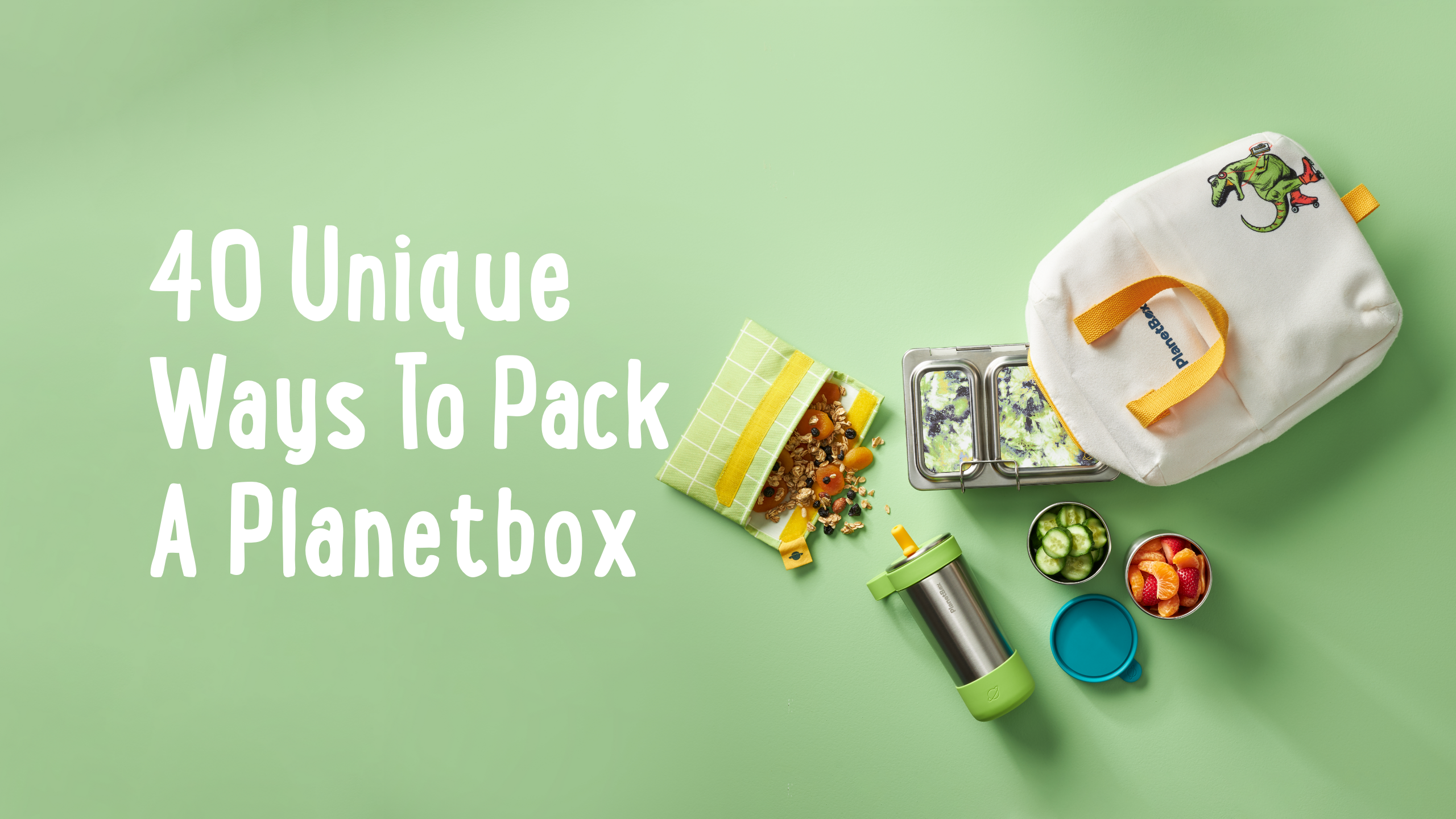Meet our product designers!
Together they have an impressive set of skills! Our Senior Industrial Designer works everyday to bring new product concepts to life while our Design Engineer ensures they're strong, sturdy, and well made.
We sat down with them to discuss the science behind our materials so that the everyday user can feel good about their PlanetBox investment!
Q: How safe are our products?
We fully test for lead, BPA, and phthalates and conform to the Consumer Product Safety Improvement Act (CPSIA) requirements for children’s products; including substance content limits, testing and certification obligations, and requirements for tracking labels. The requirements are implemented and enforced by the U.S. Consumer Product Safety Commission (CPSC).
Q: What makes our materials so durable?
A: We are very selective with our materials. When you look at all of our products they are pretty exclusively made from stainless steel and silicone. The materials we use are durable by nature, but how we use them is also really important to their durability.
Designing products without plastic is hard. So many of the products in industry today rely on plastic to work properly because it is easy to work with and there are tons of different kinds to match various applications. As such, you can’t just take a product that uses plastic and transfer it to stainless steel and silicone easily.
Let's look at our recently released Glacier Sip Straw Water Bottle for example! Most flip straw bottles rely on many plastic pieces and parts that can easily break or be hard to clean. Since we only used silicone and stainless steel on our bottle, we were relatively limited in the shapes and assembly we could do. We had to make sure that the design was simple, but still very robust. Which also makes it so unique!
You can remove every piece on that bottle and when you put it back together it will still work. There are no hard-to-clean spots so you’ll never have to toss it when it gets icky. You can drop it, swing it around, and knock it over and it wont leak (assuming the straw is in the closed position). The only way the bottle stops working is if a piece gets lost (which we will eventually offer replacement parts for). Making it highly durable!
Q: What type of stainless steel do we use & why?
A: We primarily use 304 SS and 420 SS throughout our product line and they are both great options for food-safe applications. They do not react with food or change with temperature – so you never have to worry about it leaching into what you are eating. They are also corrosion resistant, durable, and highly recyclable! However they both have different “specialties''. 304 is used for a majority of our items including the base of all our lunch boxes, dippers, water bottles, etc. It is easier to shape when doing deep draws, which is needed to accomplish the wells on our lunch boxes, for example. 420 is not as flexible but is stronger, so we use it for all our lunch box lids and product handles. Most importantly 420 has magnetic properties, which allows all the fun customization you can do with magnets on top!
Q: What are the benefits of stainless steel? What makes it better than other materials?
A: It’s strong, temperature resistant, chemical free, easy to clean, aesthetically pleasing, versatile, and highly recyclable! It sounds like we’re spewing buzzwords, but it is all true. When you compare it to other materials, it holds its own. Glass checks most of the boxes above, except it’s easy to break. Plastic is highly versatile, and can have some of the other properties, but is not environmentally preferred or chemical free. Both glass and plastic are more microwavable (although stainless steel can also be microwaved with the right design – check out the tray in the Explorer Leakproof Lunch Box for example), but stainless steel is more temperature resistant.
Overall, you have to use whatever material works the best for your application. Stainless steel ticks a lot of those boxes for PlanetBox: it’s corrosion resistant so the user doesn’t have to worry about their lunch box rusting; the rigid material protects food from being crushed during transportation; and it will not break or chip if dropped on the ground unlike plastic lunch boxes.
Q: Does the design of our lunch boxes (with the wells) contribute to its structural strength?
A: They do! Although there is a balance. The wells give the boxes structure and make them harder to bend or deform. Similar to how a sheet of paper is floppy and can't stand up by itself, but once you crease or bend it, it adds rigidity and structure to the sheet. Sheet stainless steel acts the same way. A flat sheet isn’t very strong, but once we add the wells and roll the edges, the sheet gains strength and structure.
However, the more wells, the harder it is to draw that shape out during the manufacturing process. Our Rover box has the most wells of all our boxes, but the Launch is a lot deeper. It would be very hard to manufacture the Rover Lunch Box to have the same depth as the Launch Lunch Box. With all our designs, we try to find the best balance between what the materials can do, functionality, and strength!
Q: How long does stainless steel hold up? WIll it bend or break?
A: Stainless steel can last for decades! Proper care and maintenance means our lunch boxes could be passed down for generations. Could it bend or break? It can bend or break over time if it's constantly being dropped or not being used properly, but it would be very hard to do! We’ve had stories of our lunch boxes getting run over with cars, and other stories of the Rover being in use since the brand launched – almost 15 years ago!
Q: Can a lunch box break if it falls off the lunch table?
A: We’ve thrown one at the ground before and it didn’t break! It was for durability testing, we promise…
The easiest thing to break on the box is the closing latch. It is made from a much thinner stainless steel rod and could potentially get bent or snapped. We do sell replacement parts for this reason, and they can be easily switched out if needed!
Q: Can you recycle stainless steel?
A: Yes! And it is endlessly recyclable (meaning the structural integrity of the material isn’t compromised when recycled. However, not all curbside recycling programs include stainless steel in pick-up. Be sure to check your local recycling regulations to see before tossing it in your recycling bin, or look for local drop-off locations that accept stainless steel!
Q: Why do we use silicone instead of plastic?
A: There is a really interesting difference! To start, traditional plastics are primarily made from crude oil. Crude oil – which is commonly recognized as petroleum – is a scarce and non-renewable resource extracted from the ground, and processed into gasoline, diesel, asphalt, AND different forms of plastic (ABS, PP, PET, etc.). This extraction process is hard on the environment and once out of the ground it has to be processed with different chemical compounds under heat and pressure to form hydrocarbons, which is the backbone of all plastics. Additionally, hydrocarbons are not completely inert.
Why is inert important? A material is inert if it is in a solid, steady-state that is not chemical or biologically reactive (glass and stainless steel are completely inert for example!). Since hydrocarbon based plastic is less inert it is far more likely to leach chemical compounds into your food, especially when exposed to heat or when scratched. And while you can buy BPA free plastic, that doesn't mean there aren't other bisphenol (BP) or harmful chemical compounds that can leach into your foods, it just means it wasn't tested for it.
Now for silicone! It is the most abundant compound on earth, and it has a much more environmentally preferred extraction process. Because the backbone of silicone is silicon, it is far more inert, which means it is much more resistant to heat, damage, or chemical reaction. It’s very durable and heat resistant and won’t deform, crack, or break down into microplastics. It’s also non-toxic, food safe, stain resistant, and easy to clean!
Silicone's manufacturing process does not require bisphenols, or anything like that in the manufacturing process so it cannot leach into your food. PlanetBox only uses the highest grade of food safe Silicone (LFGB), and we chose this to ensure our products are as clean and safe as possible.
Q: Do the pods bend or stretch out over time?
A: Silicone has a high tensile strength (also known as breaking strength) and strong elasticity. Unless subjected to a very high temperature or pressure, silicone naturally wants to bounce back to its original shape and would be very hard to bend or stretch to the point of deformation.
Q: Can the pods, baking trays, straws, and lids rip?
A; If cut or punctured, yes. While silicone is very strong when it comes to stretching/bending, it is still a soft material and can be cut with a sharp object. Once cut, it would be much easier to rip. The thickness of our silicone allows for it to be resistant to scratches and minor cuts, but it is important not to puncture all the way through! The pods, baking trays, straws, and lids should not rip from normal usage.
Q: Will silicone get smelly over time?
A: We use LFGB silicone, which is the highest quality of food safe silicone. It goes through more rigorous testing making it more durable and less prone to absorbing odors. Regular washing will reduce odors. That being said, with enough time, and exposure to smelliness, they can absorb some smell.
However, silicone is highly temperature resistant, which leads to our favorite ways to remove any smells: add it to boiling water or put it in the oven to “burn” off any smells!
Credentials
Design Engineer : Engineering Degree with a concentration in Robotics; AHS (arts, humanities, and social science) concentration in Environmental Justice and Climate Impact
Senior Industrial Designer: Bachelor of Science in Industrial Design from University of Washington



Leave a comment
This site is protected by hCaptcha and the hCaptcha Privacy Policy and Terms of Service apply.